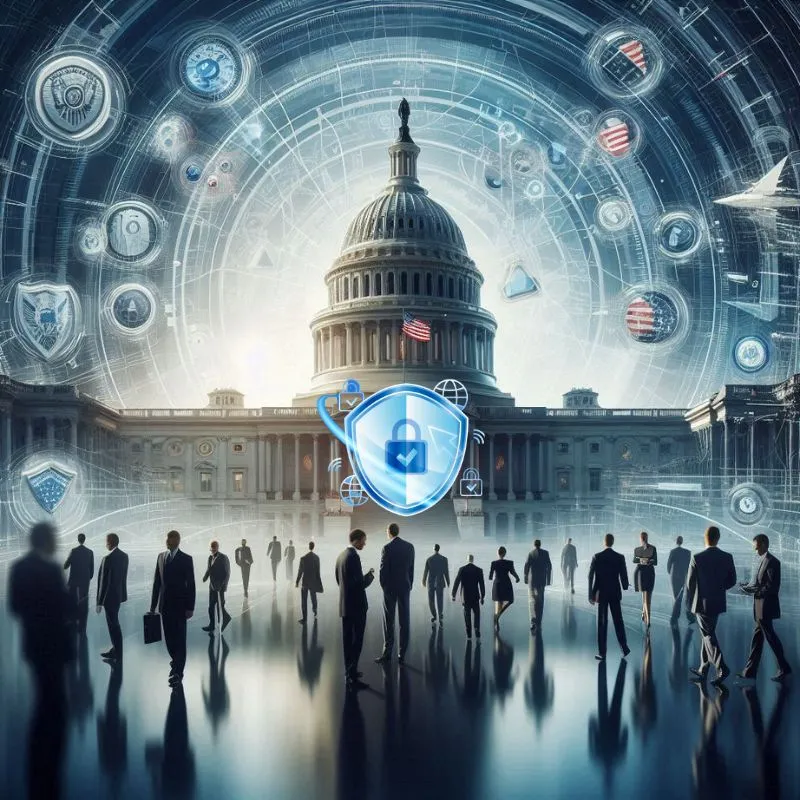Government organizations are responsible for managing important data, infrastructure and services that affect millions of citizens. Cybersecurity plays a important role to safeguard this sensitive information and ensure the continuity of essential services. As cyber threats grow more sophisticated, governments worldwide are giving priority to strong cybersecurity measures to protect against data breaches, spying and operational disruptions.
This post explores the role of cybersecurity in government organizations, the threats they face and the strategies used to fight and overcome them.
Why Cybersecurity Is important for Government Organizations
1. Protecting Sensitive Data
Governments handle large volumes of sensitive data, such as citizen records, financial transactions and classified information. Cybersecurity measures ensure that this data is protected from unauthorized access, theft or corruption. For example, encryption protocols secure communication channels, which ensures that messages exchanged between officials remain confidential and immune to interception.
2. Ensuring National Security
Cybersecurity is essential for protecting national security. State sponsored cyberattacks often target government networks to steal intelligence, disrupt operations or compromise defense systems. By implementing advanced security frameworks, governments can defend against such threats and safeguard their strategic assets.
3. Maintaining Public Trust
Citizens trust government institutions to protect their personal data and deliver services reliably. A cybersecurity breach, such as the exposure of sensitive healthcare records, can remove this trust. Strong cybersecurity measures indicate governments commitment to protect the citizens’ information and reinforce public confidence in governmental operations.
4. Preventing Service Disruptions
Government agencies provide essential services, such as healthcare, transportation and utilities. Cyberattacks, such as Distributed Denial of Service (DDoS) attacks, can disrupt these services, causing widespread inconvenience and potential harm. Implementing intrusion detection systems and network monitoring ensures continuity of these critical services.
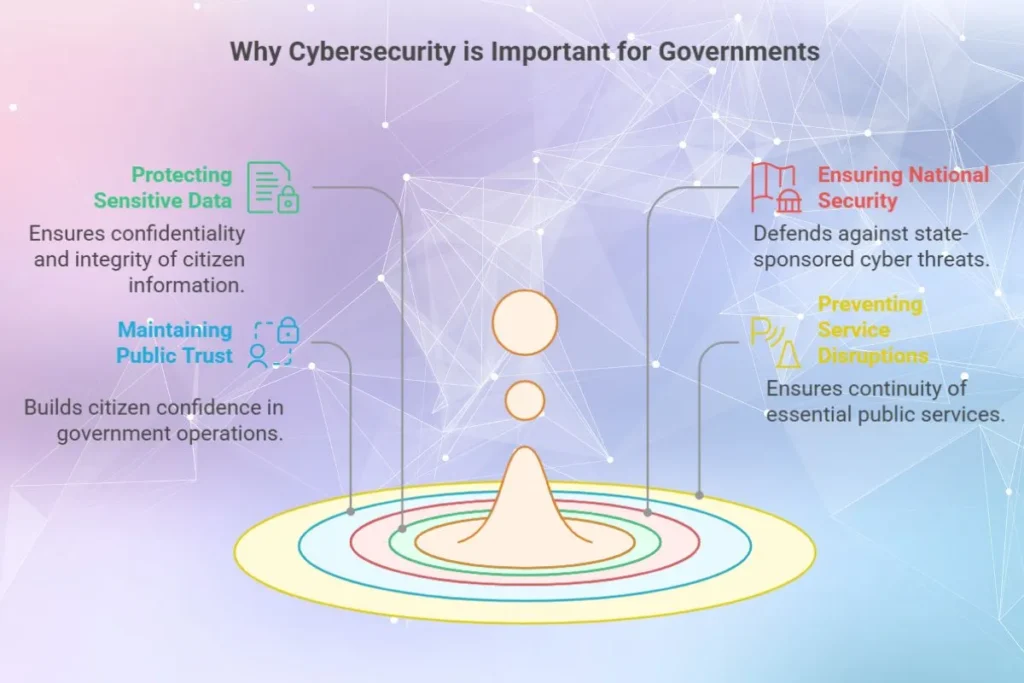
Common Cyber Threats Faced by Government Organizations
1. Phishing and Social Engineering
Phishing schemes target government employees, tricking them into revealing login credentials or sensitive information. A single compromised account can lead to network wide infiltration. Regular training for staff helps them identify and report suspicious emails, which reduces the risk of such attacks.
2. Ransomware Attacks
Ransomware encrypts critical data and demands payment for its release. These attacks can paralyze government operations, from municipal services to emergency response systems. Implementing regular data backups and endpoint protection can lower the impact of ransomware incidents.
3. State Sponsored Espionage
Nation states often deploy sophisticated malware to spy on government activities or disrupt operations. These attacks target vulnerabilities in software and hardware. This highlights the importance of regular patching and updates to critical systems.
4. Insider Threats
Disgruntled employees or contractors with access to government networks pose significant risks. They may intentionally leak sensitive information or inadvertently introduce malware. Enforcing strict access controls and conducting background checks can minimize this risk.
5. Supply Chain Vulnerabilities
Government agencies rely on third-party vendors for software and hardware. A compromised vendor can act as a backdoor for attackers. Vetting suppliers and requiring adherence to security standards reduces the likelihood of such breaches.
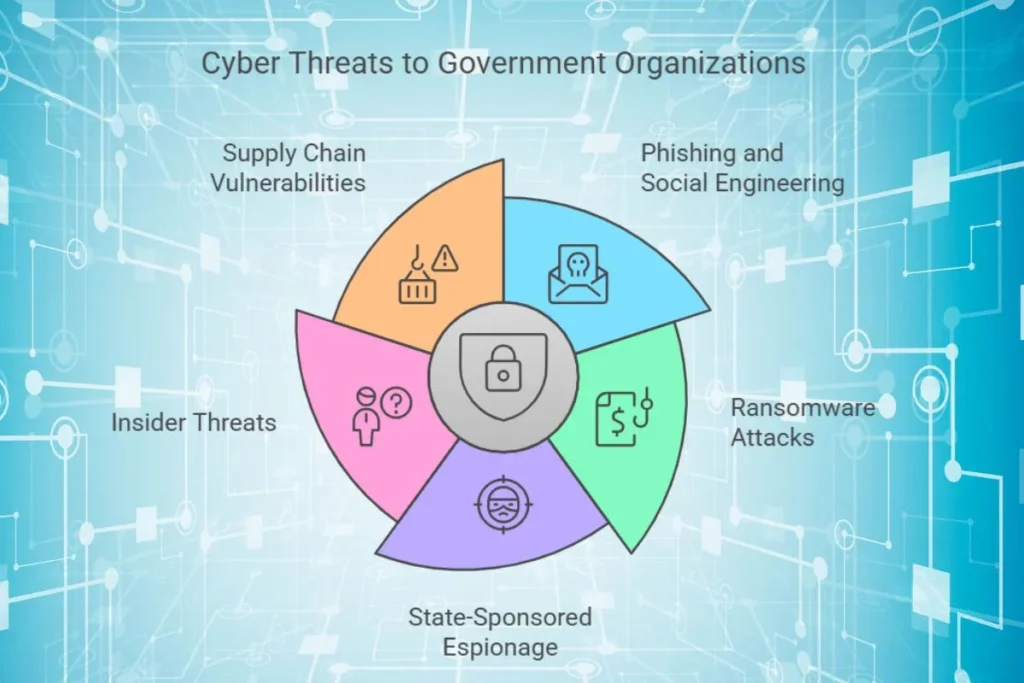
Key Cybersecurity Strategies for Government Organizations
1. Adopting Zero-Trust Architecture
Zero-trust architecture operates on the principle of “never trust, always verify.” All users and devices are continuously authenticated and authorized before accessing resources. For instance, a government employee logging in remotely might need to verify their identity through multi-factor authentication and prove compliance with security policies.
2. Implementing Multi-Factor Authentication (MFA)
MFA enhances security by requiring users to verify their identity through multiple methods, such as passwords, biometrics, or one-time codes. This ensures that even if credentials are stolen, unauthorized access remains difficult.
3. Encrypting Data
Encryption protects sensitive data both in transit and at rest. Government communication systems, for example, use encryption to secure messages, making them unreadable to unauthorized parties. This protects information from being intercepted during transmission.
4. Conducting Regular Security Audits
Frequent audits identify vulnerabilities in government networks and ensure compliance with cybersecurity standards. Penetration testing, for instance, reveals exploitable weaknesses, which enables security teams to correct them proactively.
5. Employee Training and Awareness
Employees are often the weakest link in cybersecurity. Training programs educate staff on recognizing phishing attempts, managing passwords securely and responding to potential threats. Simulated phishing campaigns, help to reinforce training by testing employee vigilance in real world scenarios.
6. Deploying Advanced Threat Detection Systems
AI-powered tools analyze network traffic to detect unusual patterns that may indicate cyberattacks. These systems can identify and respond to threats in real time, such as blocking an IP address involved in brute-force attacks.
7. Securing Critical Infrastructure
Critical infrastructure, such as power grids and water supplies, is a primary target for cyberattacks. Governments use network segmentation and intrusion detection systems to isolate these systems from broader networks, minimizing the impact of potential breaches.
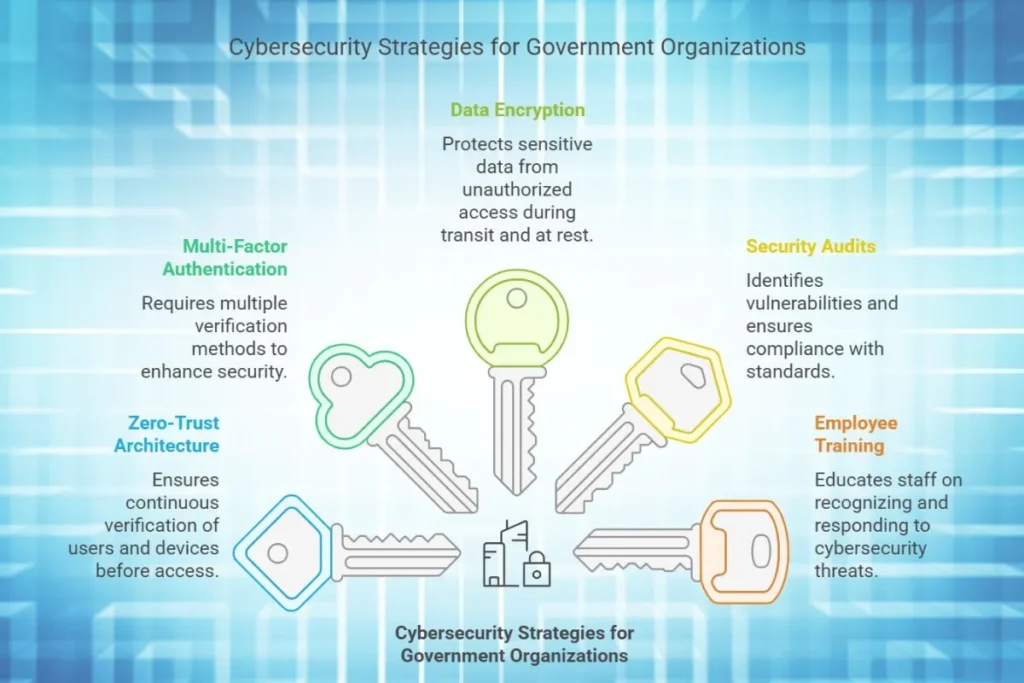
The Role of AI in Government Cybersecurity
1. Real-Time Threat Detection
AI analyzes vast amounts of data to identify anomalies and detect potential threats. For example, an AI system can flag unusual login locations or access patterns, which allows security teams to respond immediately.
2. Automating Responses
AI automates routine security tasks, such as isolating compromised systems or blocking malicious traffic. This reduces response times and minimizes damage during active attacks.
3. Predictive Analytics
AI uses historical data to predict and prevent future threats. For instance, it can identify patterns associated with previous breaches and alert administrators to similar risks before they escalate.
4. Enhancing Incident Management
AI streamlines incident management by categorizing threats based on severity and suggesting appropriate responses. This helps prioritize critical issues and ensures they are addressed promptly.
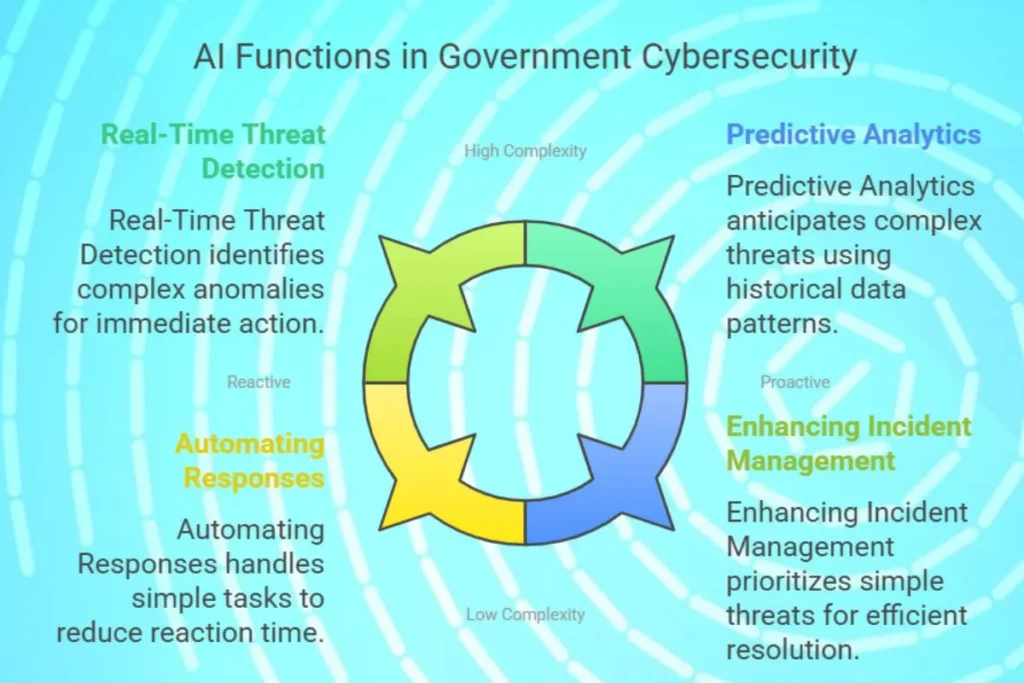
Challenges in Implementing Cybersecurity in Government Organizations
1. Budget Constraints
Cybersecurity tools and skilled personnel are costly. Smaller government agencies may struggle to allocate sufficient resources, leaving them vulnerable to attacks.
2. Rapidly Evolving Threats
Cybercriminals constantly develop new techniques, requiring governments to stay ahead with continuous updates and innovations. Zero-day vulnerabilities, for example, can exploit unpatched systems before security teams respond.
3. Balancing Security with Accessibility
Excessive security measures can hinder operations and delay service delivery. Striking the right balance ensures both security and efficiency.
4. Interagency Coordination
Government agencies must collaborate to share threat intelligence and coordinate responses. However, differences in policies and infrastructure can create challenges in seamless integration.
Conclusion
Cybersecurity is foundation of modern government operations. It protects sensitive data, ensures national security and maintains public trust. As cyber threats continue to evolve, governments must adopt advanced technologies, such as AI and zero-trust frameworks, to stay ahead.
By prioritizing employee training, regular audits and robust infrastructure protection, government organizations can create a secure digital environment that supports efficient service delivery and public confidence. Proactive investment in cybersecurity today will ensure strong protection against tomorrow’s threats.

